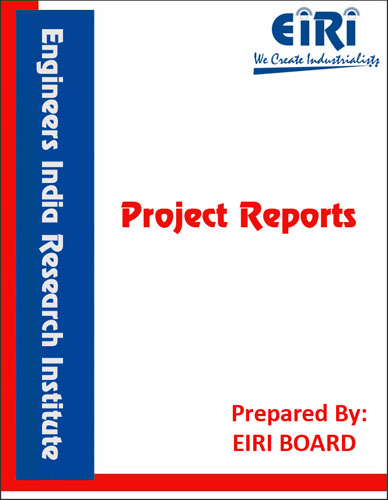The project report includes Present Market Position and Expected Future Demand, Market Size, Statistics, Trends, SWOT Analysis and Forecasts. Report provides a comprehensive analysis from industry covering detailed reporting and evaluates the position of the industry by providing insights to the SWOT analysis of the industry.
Carbon is probably the most widely distributed element in nature. It occurs in two allotropic crystalline forms viz. graphite (hexagonal system) and diamond (isomeric system), the former is soft and black while diamond is hard and transparent. Charcoal, coke and carbon black, classified as emorphous carbon; are considered by some to represent a third allotropic form. They are said to be composed of very minute crystals of graphite by others. Carbon is an essential constituent of all vegetable and animal matter in which it occurs in combination with hydrogen, nitrogen, oxygen and other elements in immense variety of compounds. In combination with hydrogen it occurs as hydrocarbons in petroleum. It is also found in carbon dioxide in air (0.03% as sodium bicarbonate in sea water, and as calcium and magnesium carbonate in sedimentary rocks such as chalk and dolomite.
Many carbons of industrial value are prepared from coal and from organic vegetable and animal matter. The resulting amorphous products include charcoal, coke and protroleum coke. Several carbon products are prepared and used in the electrical and electro-chemical industry.
Carbon 13, a stable isotope of carbon (At wt 13) has recently come into prominence as a tracer element employed in the study of biological process. It is obtained from carbon compounds by concentrating the minute quantity of the heavier isotope, normally present in them, by thermal diffusion methods. Carbon 14 or Radioactive carbon, a product of the uranium atomic pile, is used also as a tracer element in the study of plant and animal metabolism.
The term Activated carbon, active carbon, or active charcoal is usually applied to amorphous carbons possessing higher absorption capacities than wood or animal charcoal. Many processes were developed during world war for the production of effective absorbents for use in gas masks. Industrial activated carbons in the form of pellets, granules or fine powders, and with many industrial applications, are now available in the market under different trade names.
Commercial absorbent carbons may be grouped into decolorizing, gas absorbant, metal absorbant, and medicinal carbons according to their physical structure, properties, and applications. No one type of carbon can be used for all purposes. A large variety of raw materials are available for the manufacture of these products. Coal, petroleum coke, and wood charcoal are activated by gas activation. Industrial waste e.g. raw dust, bagasse, molasses, straw, coconut pericarp and shell, corn cobs, paddy and ground nut husk, corn bean shell, distillery slop, waste Mahua flowers, waste wood pulp laquor, and mud from sugar factories have been utilized for the production of active carbons by chemical activation.
• INTRODUCTION
• USES & APPLICATIONS
• END-USER INDUSTRIES OF ACTIVATED CARBON
• BUYERS IN OVERSEAS COUNTRIES
• PROPERTIES
• B.I.S. SPECIFICATIONS
• STRUCTURE OF ACTIVATED CARBON
• ADSORPTION MECHANISM OF ACTIVATED CARBON
• MARKET SURVEY
• BUYERS ADDRESSES OF ACTIVATED CARBON
• MANUFACTURERS/SUPPLIERS OF ACTIVATED CARBON
• DIFFERENT TYPES OF ACTIVATED CARBON
• MANUFACTURING PROCESS OF ACTIVATED CARBON (BY STEAM ACTIVATION)
• PROCESS FLOW DIAGRAM FOR THE MANUFACTURE OF ACTIVATED
• CARBON FROM RICE HUSK (BY STEAM ACTIVATION)
• MANUFACTURING PROCESS OF ACTIVATED CARBON FROM COCONUT SHELL (BY STEAM ACTIVATION)
• PROCESS FLOW DIAGRAM FOR THE MANUFACTURE OF ACTIVATED
CARBON FROM COCONUT SHELL
• MANUFACTURING PROCESS OF ACTIVATED CARBON FROM SAW DUST
• PROCESS FLOW SHEET FOR MANUFACTURE OF ACTIVATED
CARBON FROM SAW DUST
• MANUFACTURING PROCESS OF ACTIVATED CARBON FROM LIGNITE
• TIME FOR COMPLETION OF PROJECT
• PROCESS IN DETAILS
• QUALITY CONTROL TESTING OF ACTIVATED CARBON
• PLANT LAYOUT
• STATE AND CONTROL SUBSIDY SCHEME FOR ACTIVATED CARBON PROJECT
• COMPLETE PLANT SUPPLIERS FOR ACTIVATED CARBON
• ADDRESSES OF RAW MATERIAL SUPPLIERS
• ADDRESSES OF PLANT & MACHINERY SUPPLIERS
APPENDIX – A :
1. COST OF PLANT ECONOMICS
2. LAND & BUILDING
3. PLANT AND MACHINERY
4. FIXED CAPITAL INVESTMENT
5. RAW MATERIAL
6. SALARY AND WAGES
7. UTILITIES AND OVERHEADS
8. TOTAL WORKING CAPITAL
9. COST OF PRODUCTION
10. PROFITABILITY ANALYSIS
11. BREAK EVEN POINT
12. RESOURCES OF FINANCE
13. INTEREST CHART
14. DEPRECIATION CHART
15. CASH FLOW STATEMENT
16. PROJECTED BALANCE SHEET



